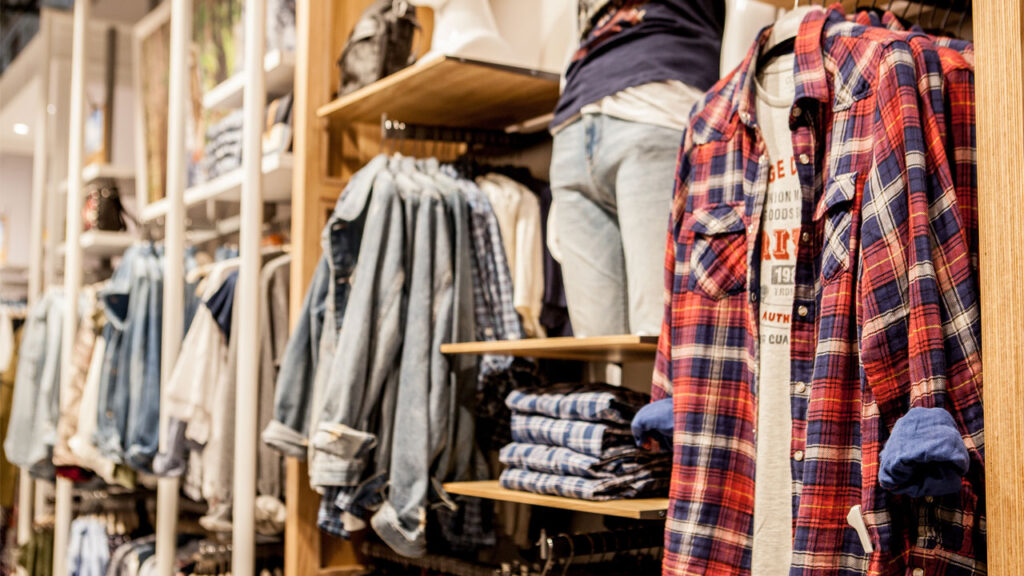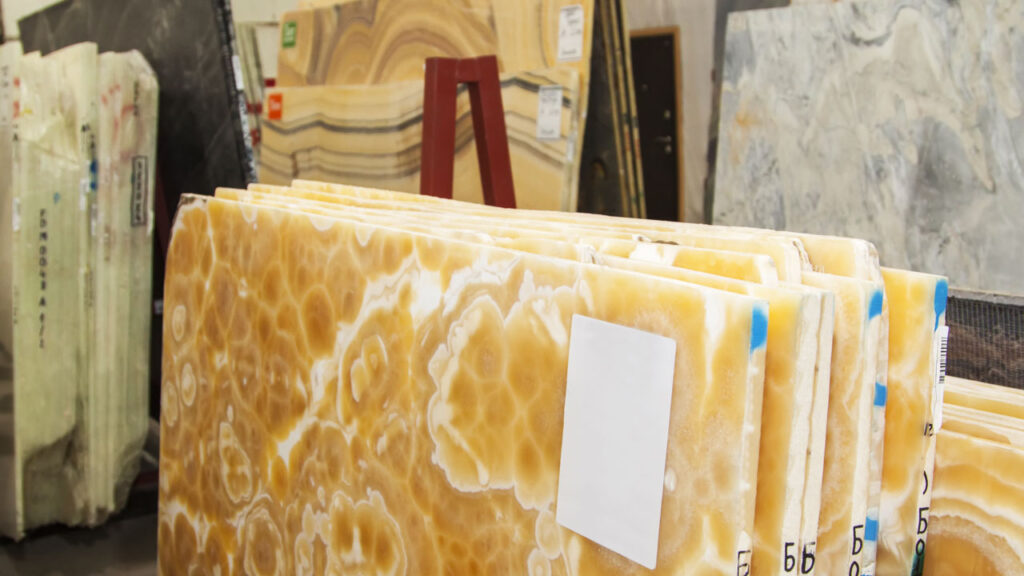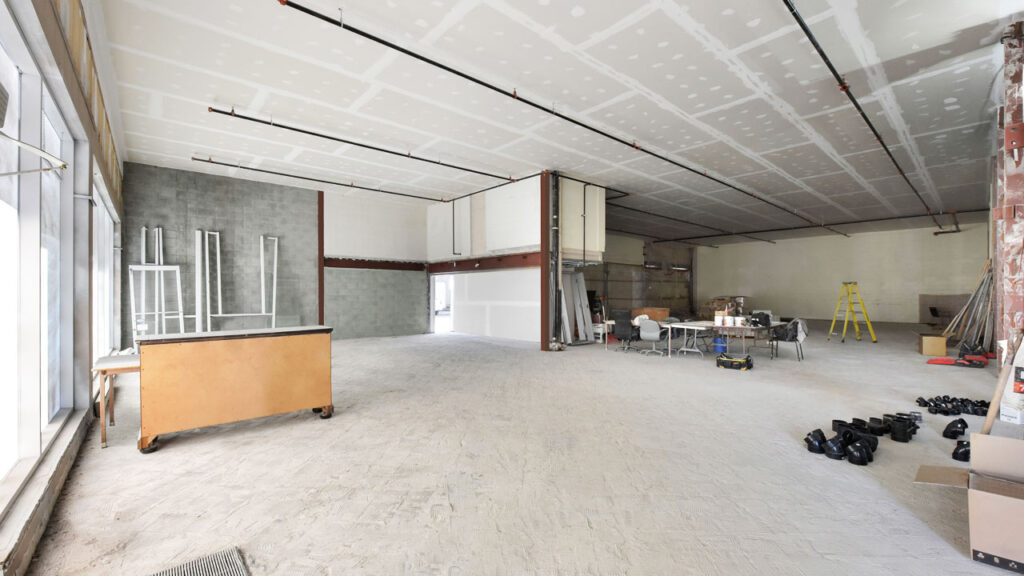From MDF & particle board to melamine, laminate, and veneers. From solid and engineered wood to natural and manufactured stone.
Picking the right materials for your custom retail fixtures is about more than just looks.
Designing and buying custom retail fixtures is not a simple decision. As we covered in our recent Retail Fixture Buying Guide, with each retail fixture you have to balance the budget, with the build quality, durability, look and feel, and your customers, and your space… there’s a lot to consider.
But more important than almost any other element, the build-material – what the custom retail fixture is constructed from – has the greatest impact on budget, durability, and longevity.
But surprisingly enough, while build material impacts budget, durability, and longevity, it doesn’t have as great of an impact on the look and feel as many retailers believe.
Why is that? Because quite frankly, the advancements in engineered wood mean that you can get a solid-wood-looking live-edge from a lower price point option. Or that natural stone look you’re after – you can get a more durable, longer-lasting, stain-proof material at the same price point or lower than natural stone.
So with everything that goes into designing and building the right custom retail fixture for your space, it’s a good idea to know what’s possible.
We’re going to give you a quick breakdown of the different substrates, or build-materials, and also give you the industry insiders-pragmatic approach to making the most of your budget while still getting the look you’re after.
What Are The Options for Your Custom Retail Fixtures?
Quite simply, no matter if you’re buying tables, retail shelves, retail displays, checkout counters, or anything else, the substrate or the build-material your custom retails fixtures are built from come down to one or more of the following options:
- Wood – High-end painted or stained wood, mid-level laminates, or affordable melamine finishes
- Metal – Build thinner, stronger, lighter fixtures out of metal
- Stone – Countertops, wall panels, and stone & brickwork
- Plastics, acrylics, & glass – Add lighting, backlit displays, or dramatic design elements with plastics and acrylics
- Wire – Wire fixtures, shelves, and bins give you flexible and durable options
That’s it. These are the options. But within each of these categories, there is an almost endless combination of different materials, styles, and price-points.
Let’s Get Pragmatic.
What’s more important to you?
- Getting the look you’re after?
- Hitting the price point you need to hit?
- Ensuring that the fixtures hold up to daily use for years to come?
Why not get all three? Because it is possible when you take a step back during the design process and focus on your true business goals. Because often, people think that the look comes at a higher price. Or the price-point affects the quality of the custom retail fixture.
And while it may seem too good to be true – getting everything you want – this approach does come with some minimal sacrifices… the type of small detail that no customer would ever notice.
Selecting the Right Wood Materials

Generally speaking, from most cost-effective (with a budget look) to most expensive (with a high-end look), here are your options:
- MDF/Particle Board
- Very cost-effective
- Wood panels that are made of tiny wood fibres, glued together or compressed into sheets
- It’s what most lower-cost furniture is made from
- It has an unfinished look and absorbs liquids
- Must be covered or clad in a surface material like melamine, laminate, or veneer
- Solid Wood
- More costly than MDF/Particle Board
- Natural or engineered wood boards or sheets that are solid wood throughout
- It’s what most higher-end furniture and cabinetry is made from
- It has a finish-ready surface, so the natural wood comes through, or it can be stained or it can be painted
- It does not require a covering or clad on the surface
- Can have a “live edge” to give a natural touch
So this thinking, that MDF is cost-effective but must be covered in surface materials that look “cheap” or that solid wood gives you a great look but is really “expensive” is no longer the case.
Because truthfully, with the advancements in surface materials like melamines, laminates, and veneers, pair with new manufacturing processes means that we can create the solid wood look at MDF/Particle board price points.
Consider this. We can mix, match, and use these lower-cost materials to create solid-looking wood slabs, amazing end-bands or live edges – everything looks solid, looks like real wood, but it’s manufactured.
Selecting the Right Stone Materials

Like wood, when it comes to stone countertops, wall panels, and stone/brickwork there are a bunch of options:
- Natural Stone Laminates
- These stone/brick-looking tiles and panels can easily be glued to a wall or display surface
- In many cases they’re lower cost to buy, lighter to work with, easier to cut, and install
- Manufactured Stone
- Lower cost than natural stone with wider-variety of colours and finishes
- Can look just like your favourite natural stone
- Less susceptible to pitting, staining, and scratching
- Unlike natural stone, it doesn’t require honing and sealing so it’s basically maintenance-free
- Natural Stone
- When you think natural stone, think marble, quartz, granite, or natural stone
- The premier material – natural stone in a retail environment always makes a statement
- By far one of the most costly materials, but come on… it looks so good
So this thinking, that laminates look cheap, manufactured stone is what retailers settle for, and natural stone is the highest-end approach for high-end retailers is no longer the case.
Like the advancements made in wood, new stone products and manufacturing technologies like those used by Neolith open a wide range of new options for designers and retailers.
Consider this. We can now give the natural stone look, with a more durable, easier to work with, easier to install product, that will cost-less, and last longer. Isn’t that what we’re all after?
Selecting the Right Flooring

Wait a minute – this is a post on retail fixtures; what does flooring have to do with custom retail fixtures?
While not exactly a retail fixture, the floor is often under-considered but an essential part of the overall design. If done right, the flooring works with the space and becomes part of it. If done wrong, it stands out and competes against your product for focus (you don’t want attention drawn to the floor rather than the goods, right?).
Well, just like wood and stone, the options for flooring have exploded over the past decade.
- Vinyl Tiles
- Often thought of as a discount or lower-cost option
- Can be glued down or set with grout to look like another tile option
- Available in a wide range of colours, sizes, finishes, and textures
- Scratch and scuff resistance depends on the tile finish
- Pretty much shatter-proof so you don’t have to worry about broken tiles
- Finished Concrete:
- In the past retailers had a choice of vinyl tile/VCT roll flooring or ceramic.
- Then some retailers started leaving their floors as finished concrete – whether it was sealed, painted or resin coated
- Despite popular belief, concrete floors can sometimes be the pricier options because when buildings are built, the concrete used for construction is a different grade than what’s needed for a finished concrete floor, so the extra step of grinding, reapplying a layer of concrete, and then finishing it is required.
- Ceramic or Porcelain Tile
- It’s what most people think of when they think of “tiles”
- These manufactured tiles have the finish (or look and feel) printed onto the tile surface or glazed in
- The colours, sizes, finishes, textures and price points are almost endless
- Not really shatter-proof, so hard impacts would chip or break tiles and need to be replaced
- Natural Stone Tiles
- Like ceramic or porcelain tiles, but made of natural stone, they look amazing and cost a lot more.
- Specialty Flooring Tiles
- Carpeted environments like offices
- High-impact environments like gyms
- Slip-proof environments like garages or wash stations
- Wash-down environments like kennels or vet clinics
- And of course, a lot more
So this thinking, that vinyl tiles or a finished concrete floor is the cheap option, ceramic or porcelain tiles are what retailers tend to go for, and natural stone or specialty tiles are “what the big guys can afford” is not the case.
Like everything else we’ve highlighted in this post, when it comes to the advancements made in flooring the vast number of offerings available is pretty spectacular.
Consider this. The vinyl and vinyl composite tile (VCT) market has made huge strides in its variety and offers – you can now get looks like concrete finish tiles, rolled flooring with natural looks and textures, endless colours, and more.
And more than anything, the flooring has to work! Get it wrong, and it’ll drive you crazy for years. Get it right, and it creates the best foundation for your product and store environment.
Find the Right Solution for Your Business.

And that’s what this is all about. We want you to know you have options.
- You don’t have to settle on look and feel
- You don’t have to break the bank
- You can get years out of the right fixture.
All this is possible if your custom retail fixtures are spec’d to your needs, pragmatically designed, and built correctly.
Our retail design and manufacturing team has delivered for over 10,000 locations and 200 million+ sq ft of retail space. We know what works, what doesn’t, and how to value-engineer a custom retail fixture to get the absolute most out of it.
Give our retail design team a call and we’ll walk you through the process and take care of all the details for you.

